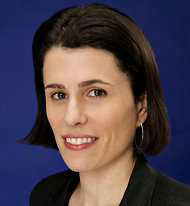Diana Mogollón, the general manager of Mun2, and Joe Bernard, the channel’s senior vice president for sales, spoke to a small group of reporters in a warehouse space for the presentation, known as an upfront, where networks introduce their new offerings to advertisers and media buyers.
Among the shows expected to make their debut in 2014 are “Viva los Vargas” a reality series based on Fernando Vargas, a retired Mexican-American boxer, and his family life in Las Vegas. “Reinas de Realty” features two Latinas who are trying to build a real estate business in Southern California and “live the American dream one casa at a time.” “Horoscopos” will follow the daily lives of Vicky and Marisol Terrazas, the two lead singers in the Mexican band Horoscopos de Durango.
The last season of “I Love Jenni,” the reality show featuring Jenni Rivera, the Mexican-American singer and television star who died in a plane crash in December, started on Sunday night and drew 366,000 viewers. “She was our star; she was our friend,” said Ms. Mogollón. Regarding the decision to broadcast the last season of the show, she said, “We met with Jenni’s family and together we decided, in Jenni’s words, to finish what we started.”
Additional programming for the 2013 season will include the second seasons of “Larrymania,” a reality show featuring the Mexican singer Larry Hernández, and “Dub Latino,” a show that profiles Latino celebrities.
Mun2 executives also announced a partnership with Telemundo to show a majority of soccer games from the English Premier League in Spanish.
In a video shown before executives and performers took the stage, Mun2 highlighted the fact that it was viewed in 35 million homes and had 26 million video streams last year. The median age of the Mun2 audience is 29, and 52 percent of them are bilingual, in English and Spanish. Mr. Bernard said the channel had signed 30 new advertisers, in categories like wireless, automotive, family dining and “even Starbucks.”
After the presentation, which included appearances by Mr. Hernández, the Terrazas sisters, and Mr. Vargas and his wife, executives were asked whether Spanish-language reality programming, like Mr. Hernández’s show, would have English subtitles. Ms. Mogollón said yes, similar to how the network handles its telenovelas. “It’s about being authentic,” Ms. Mogollon said. “We don’t want to peg ourselves to one or the other.”
Sergio Alcocer, the president and chief creative officer at LatinWorks, an Austin, Tex.-based advertising agency focusing on Hispanic consumers, said the heavy lineup of reality programming that Mun2 was planning was preferable to importing programming from Latin America. “The reality format is an interesting way to capture the U.S. Latino experience,” which is different from that of Latin Americans, he said in an e-mail.
“The big question in our industry now is, How do we make our brands relevant for young Latinos that speak both languages and consume less mass media?” Mr. Alcocer added.
While Mun2 tries to court the millennial Latino, executives at Telemundo are preparing for their network presentation on May 14. It will include a new slate of telenovelas, including one called “Dama y Obrero” that will feature a love story between an upper-class woman and a working-class man. The show keeps the theme but flips the roles of one of Telemundo’s previous telenovelas, “Una Maid en Manhattan.” In that show, based on the American film “Maid in Manhattan,” the working-class love interest was a woman who is a maid.
“Latinas love to see what we like to call modern, independent achievers,” said Jacqueline Hernández, the chief operating officer at Telemundo.
Telemundo will also present a children’s version of the popular NBC show “The Voice” called “La Voz Kids.” Scheduled for Sunday night, it will feature singers ages 7 to 14 and will be hosted by Daisy Fuentes and Jorge Bernal. To accompany the debut of the show, Telemundo will unveil a mobile application that will allow viewers to peruse social media feeds and access additional content like backstage interviews. The app, which was created using a second screen platform called Zeebox, will be sponsored by ATT.
“Advertisers are extremely interested in multiplatform,” Ms. Hernandez said.
Last year, the network showed its first ever bilingual branded entertainment Web series, called Mia Mundo, which included sponsorships by Verizon Wireless and Chevrolet. The series has been renewed for a second season with Verizon and General Motors as sponsors.
Telemundo executives have been visiting with advertisers in advance of the official upfront presentation this year and are showcasing concepts for two new branded entertainment series. One includes a traveling chef who helps people make fast and healthy meals, the other is a series about a group of college friends. So far, neither has signed a sponsor.
Article source: http://www.nytimes.com/2013/04/17/business/media/mun2-relies-heavily-on-reality-shows-starring-celebrities.html?partner=rss&emc=rss


